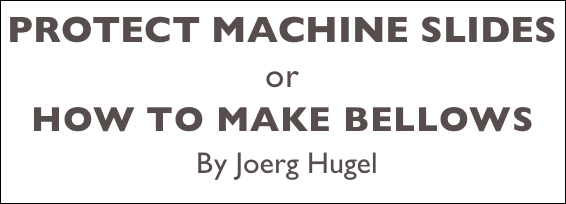The
slide ways of machine tools are very sensitive components and should
always be clean and free from any debris. The machines for industrial
production are carefully designed today with protective elements, not
only to keep the slide, slide ways and sensors clean but also avoid any
pollution of the environment. However, in the enthusiasts' workshops
this is not the standard. Most lathes and milling machines the author
has seen have no or at best very rudimentary devices for the protection
of the slide ways or lead screws. Clearly any protective cover needs
some space and reduces the usable travelling distances of the carriages,
slides or work heads. As long, as the machines are operated manually
the operator may be responsible for removing the swarf. For CNC
controlled machines another solution is necessary. For grinding
equipment an effective slide protection is a must because the dust of
abrasives together with the lubricant of the slides is a very efficient
lapping paste.
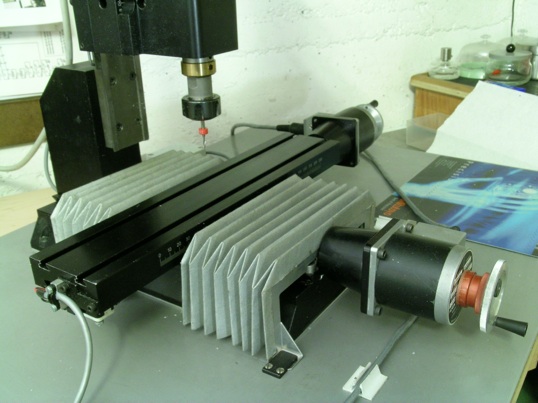








There
are different solutions to protect the sensitive components of a lathe,
milling or grinding machine. One very simple answer are bellows and
this short article will show, how they can be made. In Photo 1
is my Sherline milling machine, converted into a CNC machine. The slide
and lead screw of X-axis are protected from swarf in the design of the
machine but not the respective components for the Y-axis. Therefore, two
bellows were installed. One end is mounted to the cross slide, the
other ends are held by two flanges, fixed to the base plate by a spring
loaded ball detent. So the bellows can be easily lifted for cleaning and
lubricating the slide ways, no tool is necessary. In Photo 2 the bellows for a Stent tool grinder is seen.
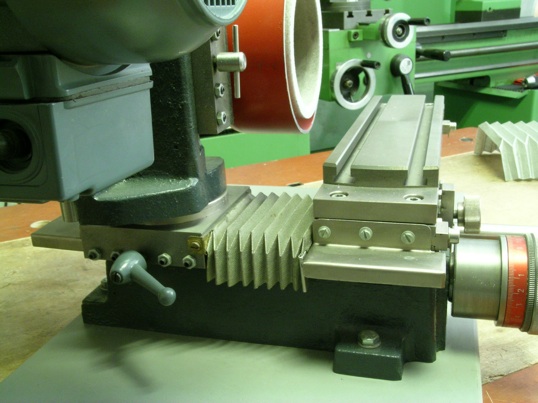








Figure 1
shows the folding scheme for bellows. It is a simple matter to make
this from a sheet of paper. But with other materials, e.g. leather or
fabrics this would be difficult or even impossible. Paper has the
necessary stiffness and if folded becomes flexible at the edges.
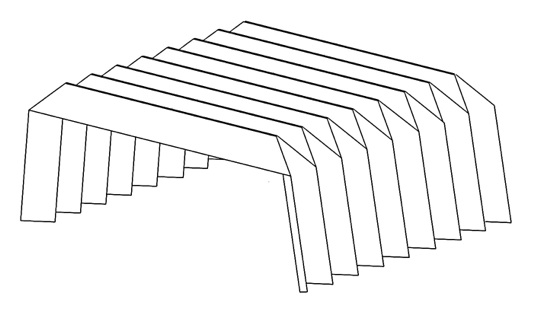








The bellows in Photo 3
were commercially manufactured. To make these from different materials,
even from sheet metal, very special jigs are used. I would not go into
the details. But please notice, the folding scheme is different from
Figure 1.
This has the property that the side parts of stretched bellows move
together, opposite to the behaviour of the bellows of Figure 1. In the experience of the author these features are not really essential.
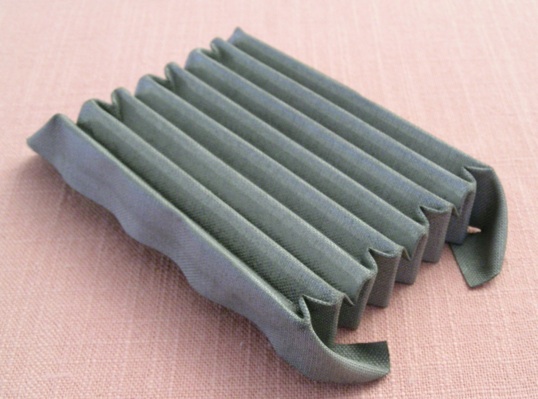








Clearly
bellows from paper wouldn't be suitable for the purpose regarded here.
But a combination of paper, more precisely, polyester paper, and a
protective layer could be the solution. By accident the author received
a somewhat worn out protective cover for an ironing board. This is a
compound of a thin foam layer and a fabric which has a metalized
surface. The foam was easily scraped off. he metalized fabric together
with the polyester paper has proved to be the perfect material for
bellows for milling and grinding machines.
Manufacturing Details
First
it is necessary to make the design, a drawing with the folding lines.
In the compressed state the folding angles are zero, for the maximum
length a folding angle of 45 Deg. is recommended, however not more than
60 Deg. To avoid errors the lines should show the folding direction by
different line pattern or colours. An example is seen in Figure 2.
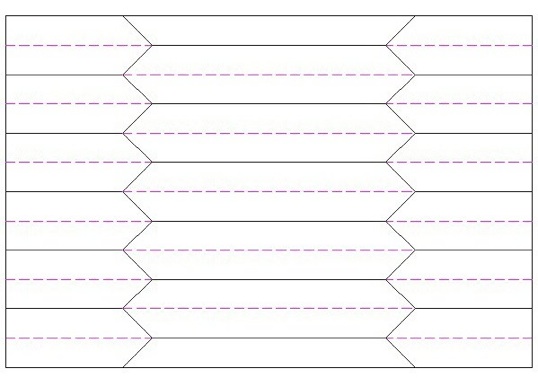








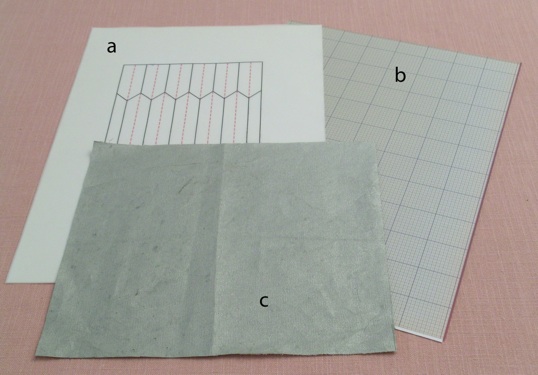








The materials for the bellows can be seen in Photo 4. The drawing for the folding lines is now transferred to a sheet of polyester paper as seen in Photo 4a. Recommended grade is 120 to 180 g/mm2,
equivalent to 0,1 to 0,15 mm thickness. In this case the drawing was
made with an inkjet printer. However, to dry the drawing takes several
hours if not a day. A laser printer cannot be used, because the
polyester paper becomes warped by the heat. But as seen in Photo 4b
the polyester paper is available with a millimetre grid and then a
manual drawing of the folding lines is really a simple matter. In Photo 4 c the metalized fabric is shown from the rear side.









Now
the polyester paper is folded in several steps. Here the bookbinder's
traditional tool, the folding leg, comes into its own; two examples are
shown in Photo 5. The folded paper bellows are seen in Photo 6.
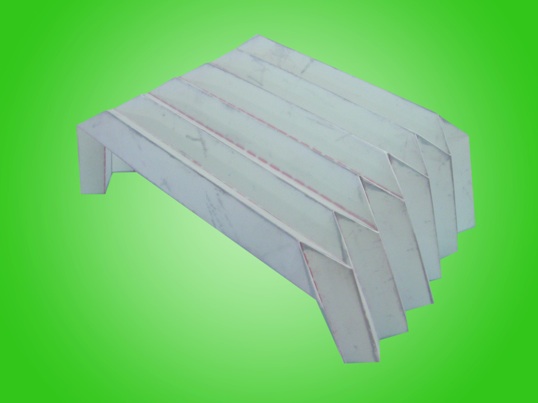








Then the fabric and paper bellows are put together with white PVAC glue as seen in Photo 7. The completed bellows are shown in Photo 8.
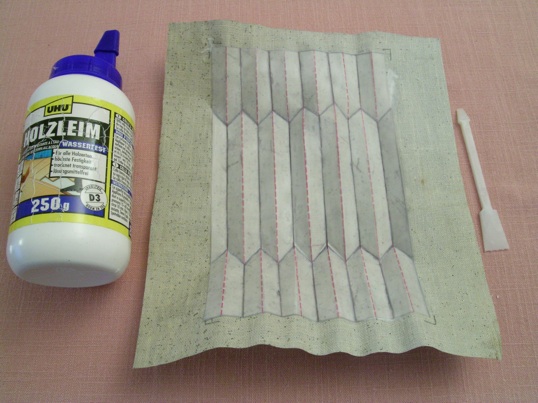








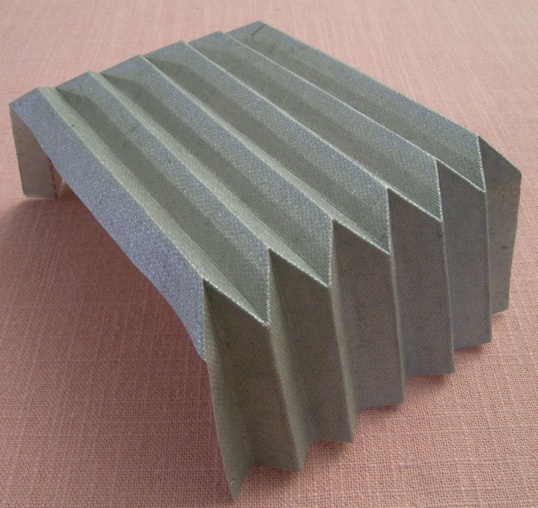








Joerg Hugel is a Member of the Society of Model & Experimental Engineers and this article first appeared in the SMEE Journal in February 2014.

